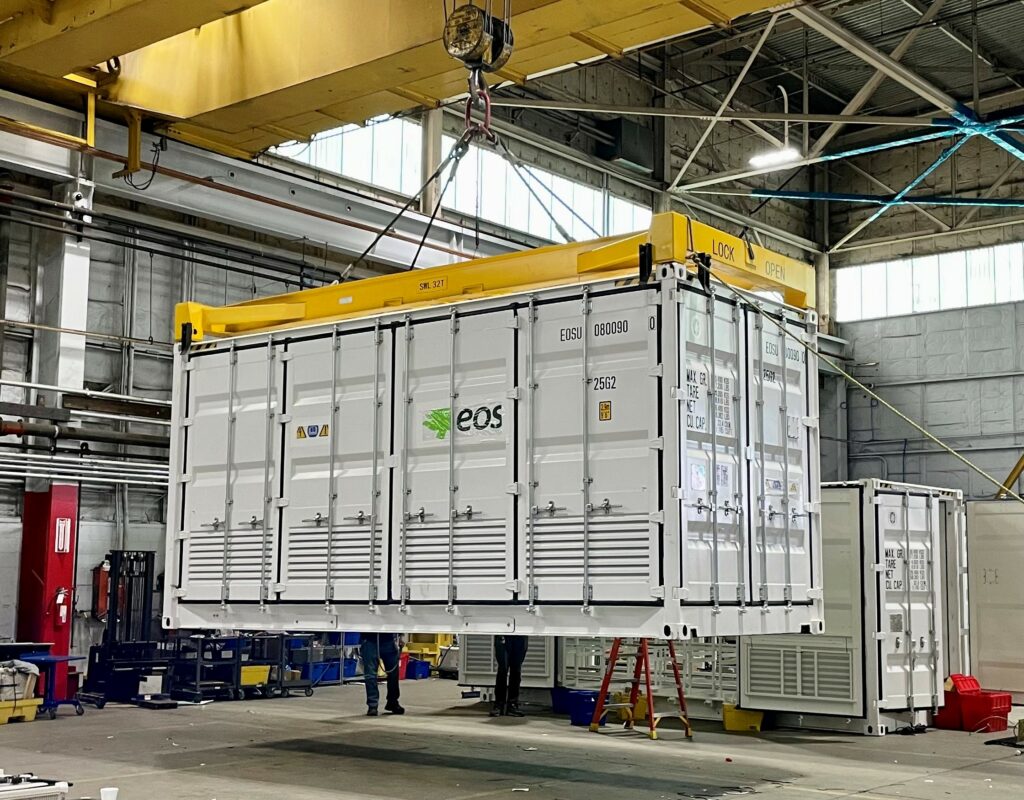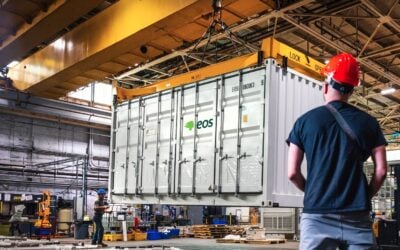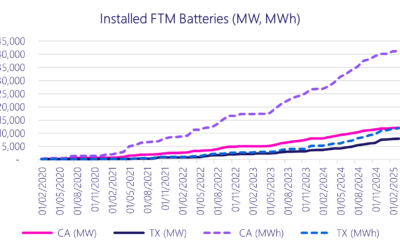
Eos Energy Enterprises won’t meet previously issued revenue guidance for this year but expects 2022 revenue recognition to be pushed out into next year.
The US zinc battery storage company’s revenues for the nine months ending 30 September 2022 were more than 10 times higher than in the equivalent period of last year, leaping from US$1.49 million to US$15.26 million.
Enjoy 12 months of exclusive analysis
- Regular insight and analysis of the industry’s biggest developments
- In-depth interviews with the industry’s leading figures
- Annual digital subscription to the PV Tech Power journal
- Discounts on Solar Media’s portfolio of events, in-person and virtual
Similarly, in Q3 2022, revenues were just over US$6 million, a significant leap from US$718,000 revenues registered in Q3 2021.
However, earlier in the year Eos, which makes a stackable battery unit with a proprietary zinc hybrid cathode technology, had offered revenue guidance of US$50 million for 2022. In announcing its Q3 results yesterday, the company said 2022 revenue expectations were now between US$17 million and US$20 million, some 60-66% lower than the guidance.
Cost of goods sold was just over US$50 million for the quarter, while total costs and expenses added up to just under US$70 million. That led to a three-month operating loss of US$63.57 million and a net loss of US$70.7 million.
Eos ended September with just over US$51 million in cash, cash equivalents and restricted cash, versus US$144.7 million at the end of September 2021.
CEO Joe Mastrangelo said the company continued to ramp up production “in the most challenging supply chain environment of my career,” with global chip and personnel shortages at factory equipment OEMs delaying key equipment deliveries by up to 12 weeks.
Eos could benefit from Inflation Reduction Act, Department of Energy loan offer
The company has achieved some recent milestones in its journey to commercialising its technology. It just finished delivering for installation 80MWh of its battery storage systems to developer Pine Gate Renewables’ Eastover solar-plus-storage project.
As reported yesterday by Energy-Storage.news, Eos’ battery has been picked for what has been claimed is the US’ biggest renewable energy microgrid. A 35MWh Eos zinc hybrid cathode battery storage system will be paired in a hybrid configuration with a 10MWh vanadium flow battery from Invinity Energy Systems.
The project is financially supported by the California Energy Commission (CEC). Eos’ order, from project developer Indian Energy, was worth US$13.5 million.
Eos said that as of 4 November, 640MWh of energy has been discharged from Eos systems, passing the 600MWh mark during the third quarter. That includes 329MWh of field discharges, 168.5MWh of factory acceptance testing and 142.5MWh in the lab. The company has now produced more than 250 of its Energy Block battery units.
The company has booked US$324.8 million of orders during the year, equivalent to 1.3GWh of systems, and its orders backlog stands at US$452.2 million, while its pipeline of opportunities is a claimed US$7.3 billion.
At the end of 2021, backlog had stood at US$148.7 million, from which it has grown considerably, although it has not substantively grown since the previous quarter.
Like many other companies in the sector, Eos Energy Enterprises believes it is poised to capture big benefits from the US Inflation Reduction Act (IRA) legislation as it comes into effect from the start of 2023.
Similar to claims made by iron flow battery company ESS Inc in its financial results and outlook announcement a few days ago, Eos said it expected the IRA’s investment tax credit (ITC) and production tax credit (PTC) incentives to fully apply to its products and customers’ projects.
Customers can get tax credit worth up to 50% of their project’s capital investment cost, comprising a 30% base tax credit, 10% tax credit if a substantial portion of equipment or components used are domestic content and a further 10% tax credit if a project is in an ‘energy community’ aka an area where coal mining or power plant facilities recently closed.
Meanwhile as the manufacturer Eos can get a US$35/kWh battery cell manufacturing tax credit, US$10/kWh battery module manufacturing tax credit and a 10% quantifying separate tax credit for electrode active material costs.
Another potentially transformative government-related development is that Eos has been invited to apply for loans from the US Department of Energy’s Loan Programs Office. The company is in the due diligence stage of the process, where it is competing for a share of US$2.5 billion funding to help progress its goal of reaching 3GWh annual production capacity.
Worth noting is that Eos is preparing to launch Z3, the third-generation iteration of its Znyth brand battery module. CEO Joe Mastrangelo claimed the Z3 will “double performance at 50% lower cost”.
“We believe the 10-year IRA tax programme provides a long-term growth catalyst for energy storage, and we continue to see a shift to longer duration energy storage projects,” Mastrangelo said.
“Our opportunity pipeline continues to grow, and our Made in America and domestic supply chain capability uniquely positions us to not only maximise Eos’ PTC benefits, but also our customer’s ITC benefits.”






